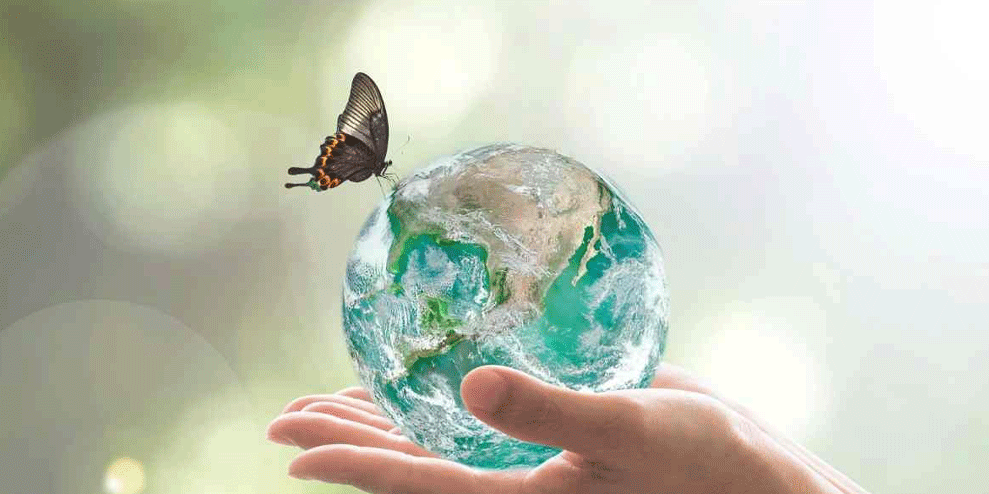New is not always better. Consumers are creatures of habit and often buy into nostalgia, Shutterstock’s Jamie Elden writes.
This year we have experienced a significant rise in action against climate change; Extinction Rebellion, Greta Thunberg and David Attenborough are just some examples of those leading the charge and forcing many into action.
Consumers and businesses are starting to take this pressing issue far more seriously. And how could we not grasp the enormity of the situation? The average carbon footprint in the UK vastly exceeds the majority of other countries; the average Brit causes more environmental contamination in six days than someone living in an African nation will in a full year.
During a time where being eco-friendly and “going green” is a priority for many, how can marketers and the advertising industry specifically make sure they’re also doing their part? Sustainability in the traditional sense is not enough – we need to look to other ways that we can do better.
The pandemic has forced us to innovate across almost every industry. For most businesses, this has been in response to the need to adapt to government lockdown guidelines, the changing behaviour of customers and an uncertain economic future. However, almost accidentally, we have seen a fundamental impact on our global carbon footprint. In fact, the decline in business aviation travel alone could cut 28 million tons of CO₂ a year.
Advertising’s role
Battling climate change is no single industry’s responsibility, and the advertising industry needs to address its role too.
If addressing the challenge in front of us for moral and ethical reasons isn’t enough, brands must understand there is a business impact to their stance. Over three quarters (77%) of consumers buy into the brands that share the same values as they do, and, as the passion for environmental issues grows amongst consumers, this becomes more important.
Many brands have recognised this. Last year, Starbucks announced trials for recyclable and compostable cups, whilst Coca-Cola used its ‘Round in Circles’ campaign to encourage people to recycle. However, there’s a dirty secret in advertising that no one is talking about: what is the environmental impact of producing advertising campaigns in general?
When the UK went into lockdown in March, production for advertising campaigns came to a sudden halt. How could production continue when everyone was being told to stay home? With restrictions in place, travelling and shooting on location became near impossible. Pre-existing content and green screens became invaluable resources that allowed the industry to keep moving.
London-based production company Cut+Run adapted its workflow by using readily-available content to complete client campaigns. It even created its own short-form video promo ads that marketed its own services using just stock footage. This approach to content creation relied on smart thinking, technology and creativity. What it didn’t need was money and time spent on travel and resource that for a single use shoot.
In response to the industry’s need to be ‘more green’, the Advertising Association recently launched a new initiative, AdGreen. The goal of this is to eliminate the negative environmental impacts of production. As we continue to plan for a world post-pandemic in line with this initiative, recycling content should be seen as both a source for creativity and sustainability.
This concept isn’t new. You will have seen it before, maybe without realising. Last year, Hovis updated its iconic ad, ‘Boy on the Bike’, after nearly 50 years. Brands should think to this when recycling content of their own. New is not always better; consumers buy into nostalgia and people are creatures of habit.
With this, brands should also be looking to others to take content inspiration from. Seeking new ideas from other brands and industries who share similar values helps to widen the funnel of inspiration, leading to new creative concepts. Brands should not allow the fear of being ‘unoriginal’ to steer them away from aligning their values alongside other content that has already been produced.
Last year, Dutch organic supermarket chain Ekoplaza was the latest marketer to repurpose Greenpeace’s animated film about palm oil and deforestation, after Iceland also (controversially) recycled the content for its Christmas ad in 2018. The word of warning here is that all content, whether new or recycled, does need to align to a company’s broader position.
Escaping the cycle
In the content-hungry, fast paced world that we live in, it is easy to get trapped in the cycle of constantly creating something new because “that’s what we do”. The industry must continue to innovate and remain fresh. However, this now needs to be balanced carefully with consumer ideals.
The Oxford English Dictionary defines the process of innovation as making “changes in something established, especially by introducing new methods, ideas, or products”. Therefore, by definition, innovation doesn’t need to translate to something brand new. Arguably, it is far more innovative and creative to produce something ‘new’ with the resources already available.
Next time you sit down to develop the storyboard for your upcoming campaign, ask yourself “Is it necessary to fly 10 people to Hawaii for four nights to record 30 seconds of footage?” Can you find that content elsewhere, recycling from somewhere or someone else? The result will provide a far more efficient production process, huge cost savings and a reduction on global carbon emissions.
How can brands promote recycling within their products if they aren’t following the same values in their advertising? Marketers have a responsibility to recycle and reuse. Luckily, they have the resources at their fingertips to do it.
This article first appeared in www.warc.com



